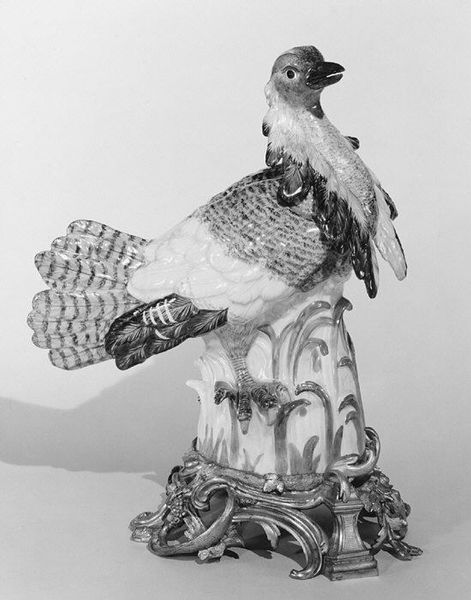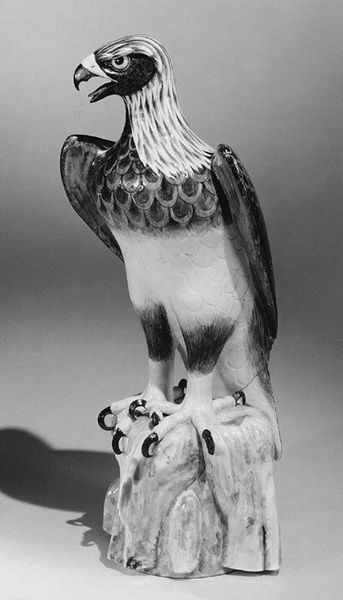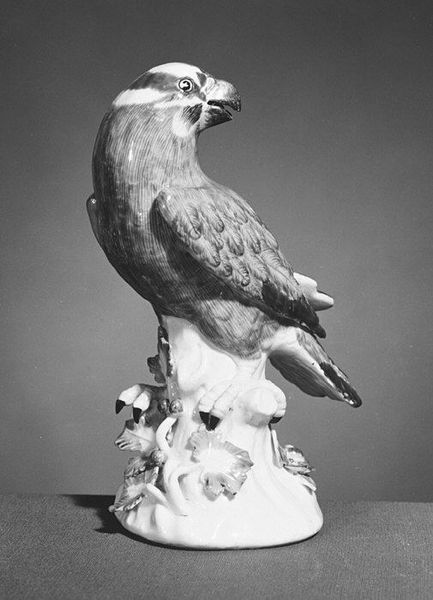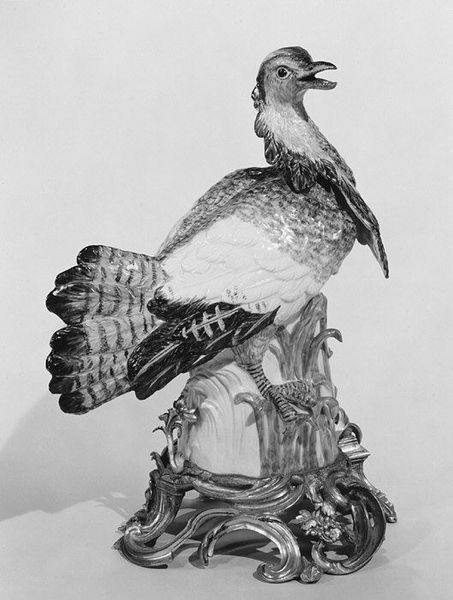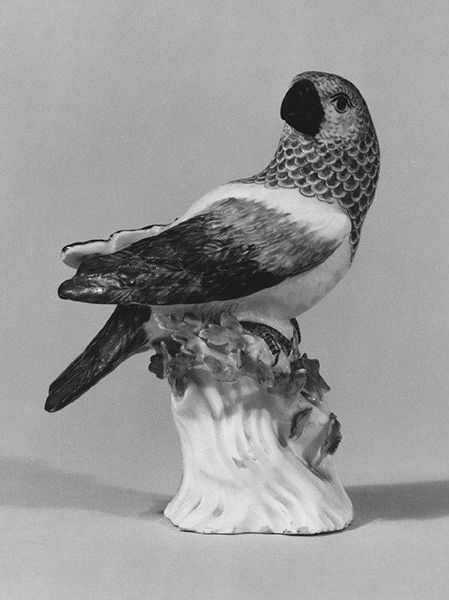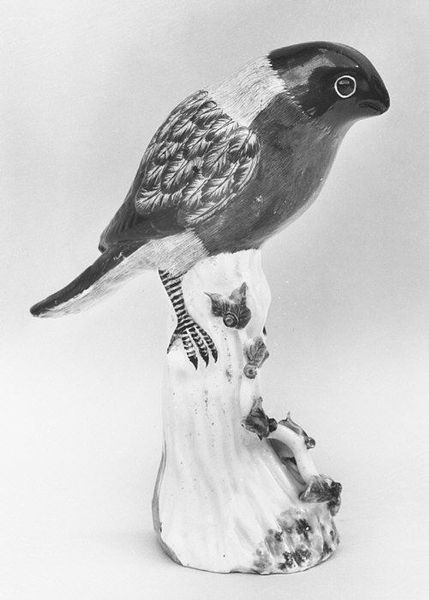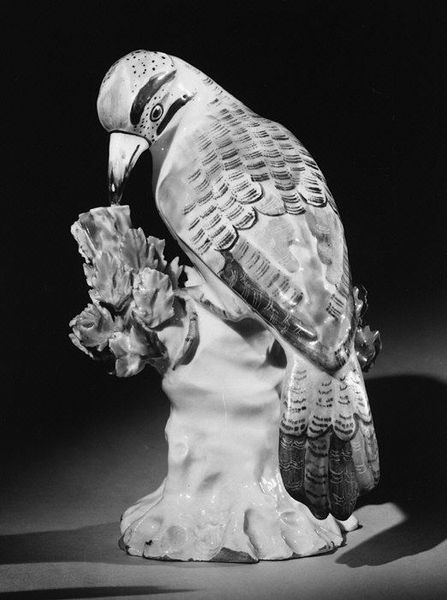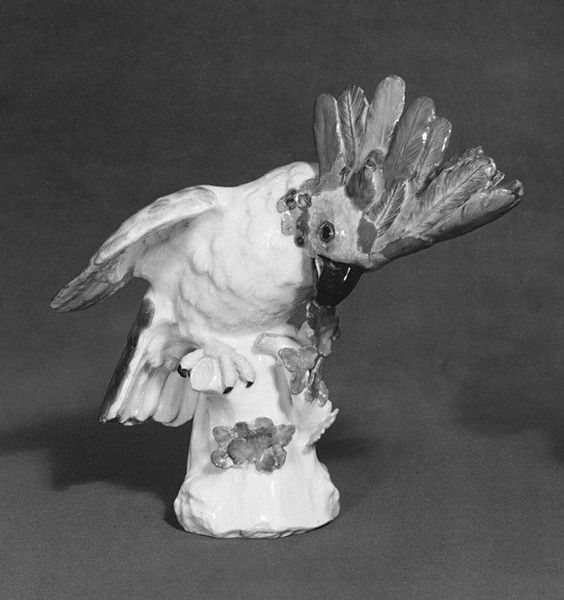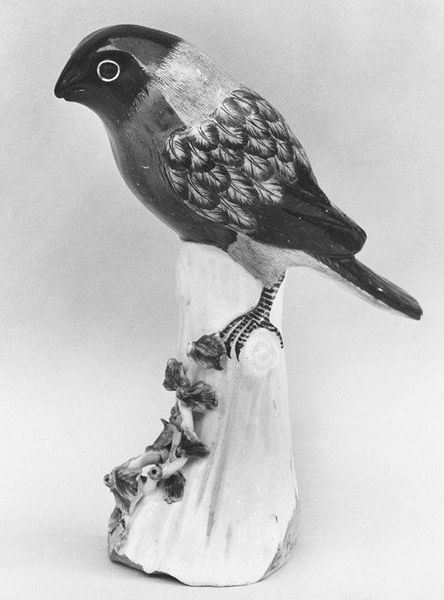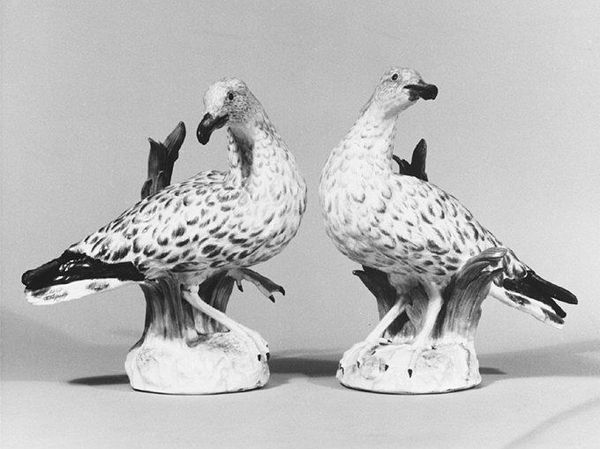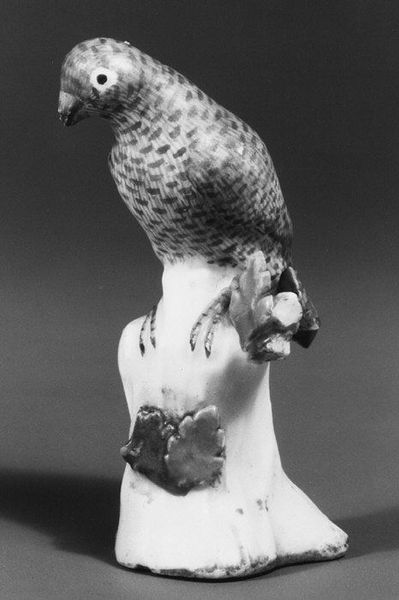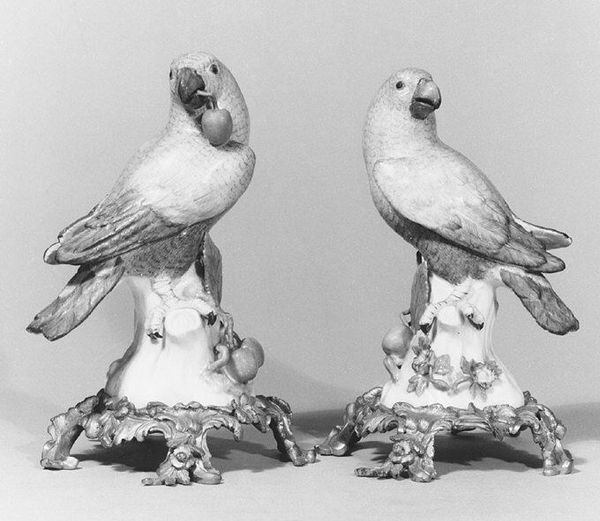
ceramic, porcelain, sculpture
#
animal
#
sculpture
#
ceramic
#
bird
#
porcelain
#
sculptural image
#
sculpture
#
monochrome
#
decorative-art
#
rococo
#
monochrome
Dimensions: Height: 17 1/4 in. (43.8 cm)
Copyright: Public Domain
Editor: This porcelain sculpture, "Ruffed Bustard," was made by the Meissen Manufactory between 1747 and 1757. It has such a commanding presence, doesn’t it? Perched regally atop its little base, looking upwards… What can you tell me about its history? Curator: Meissen porcelain, especially these animal sculptures, were products of a very specific social moment. Think about the courts of Europe in the mid-18th century. Porcelain wasn't just decorative; it was a status symbol. Royalty, like Augustus the Strong, who founded the Meissen factory, used porcelain to demonstrate wealth, power, and taste. These birds weren't for everyone. They were for display in aristocratic collections. Editor: So it’s like… art as a display of dominance? The king displaying his wealth and knowledge through owning this gorgeous thing? Curator: Precisely. And the imagery is key. The ruffed bustard, while not a rare bird, is still a bird of the hunt, connecting it to aristocratic pastimes and dominion over nature. Think of how hunting and wildlife were carefully controlled in royal lands. What does it mean for the elite to then bring this 'nature' indoors, reconstructed and managed as art? Editor: I guess it highlights control. Everything in its place, curated by the wealthy. I had only considered the beauty of the object itself. Curator: And beauty has its politics too. The Rococo style here—the elaborate details, the elegant pose of the bird—all catered to the tastes of that elite class. It was designed to please them and to subtly reinforce their cultural values. Consider how different classes and even genders might have reacted to seeing this piece at the time. Who was welcome in these court spaces and what role were these figures expected to play? Editor: That's really made me rethink this piece. It’s more than just a pretty bird; it’s a symbol of power dynamics. Curator: Absolutely. And considering art in that way helps us understand the society that created it, as well as our own response to its power and privilege today.
Comments
No comments
Be the first to comment and join the conversation on the ultimate creative platform.
